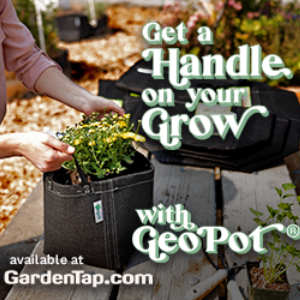
There develops within any body of knowledge, a jargon that everyone accepts who works within that knowledge group but can be misleading to those who do not work within that group. For example, those coming into the hydroponic knowledge group may not fully understand the accepted jargon, therefore not understanding how hydroponic growing methods work led to procedures that don’t work and the making of judgments that are not true.
An example is the use of the word “nutrient,” an accepted hydroponic-related word used to identify any of the 13 plant essential mineral elements, the major elements being nitrogen (N), phosphorus (P), potassium (K), calcium (Ca), magnesium (Mg) and sulfur (S), and the micronutrients, boron (B), chlorine (Cl), copper (Cu), iron (Fe), manganese (Mn), molybdenum (Mo) and zinc (Zn). The word combination, “nutrient solution,” refers to a water solution that contains either one, a suite or all 13 of the essential mineral elements listed above in solution in an ionic form, that required to be root absorbed.
For all living organisms other than plants, a “nutrient” connotes those substances needed to support life, therefore a much wider definition than that used to hydroponically identify the 13 essential plant mineral elements. So, what follows in hydroponic thought is that substances, such as vitamins and proteins, would be equally essential to plants, and therefore, should be included in hydroponic nutrient solution formulations. Plants are producers of vitamins and proteins, therefore found in plants but are not required by plants in the sense that they should be components in a nutrient solution formulation. If vitamins and proteins are added to a nutrient solution, they pose two problems. First, being molecules, vitamins and proteins are not in a form that can be absorbed by plant roots, therefore not able to contribute to plant growth. Secondly, their presence in a nutrient solution forms a “soup” that is an open invitation for invasion by disease organisms, which require these substances for their growth and reproduction.
The inclusion of vitamins and proteins in foliar-applied nutrient-containing solutions is also being recommended. Neither substance will be absorbed into leaf cells, but when held on the leaf surface become an open invitation for disease organisms and insects to congregate.
The other word is “organic,” a word that has a range of meanings depending on its use application. An organic substance is one that contains combined carbon (C), hydrogen (H) and oxygen (O). Organic concepts have been associated with what is referred to as “green technology,” therefore having an environmental connotation. What is slipping into the hydroponic jargon is the word combination, “organic hydroponics,” suggesting that hydroponics has an organic aspect that in the past was exclusively associated with inorganic plant nutrition growing methods. To some, “organic hydroponics” is an oxymoron, having no scientific basis for making such a word combination.
The distinction between what would be identified as “organic” and that not, are somewhat blurred and difficult to specifically identify. Hydroponic plant growing is “inorganic,” even though the plant may be rooted in an organic substrate, such as coir, peat, pinebark, or sawdust, with the essential plant mineral elements being supplied by either a chemical fertilizer or formulated nutrient solution. What would constitute an organic growing method is not easily defined, although an acceptable organic growing method specifies only the use of “organic” sources for the essential plant mineral elements. In an organic matrix, an essential plant mineral element is not available for root absorption until decomposition occurs releasing the element in an ionic form that form necessary to be root absorbed. There are two challenges, finding suitable organic sources for an essential plant element, and the requirements for organic matrix decomposition that has both substance characteristic factors and microbial, physical, and chemical parameters that determine the rate of decomposition and the quantity of elemental released in ionic form.
Without a basic understanding as to how plants grow, and their basic physiological and nutritional requirements, a misunderstanding of the established and developing hydroponic jargon will lead to erroneous conclusions, misguiding those developing nutritional plant products by recommending substances that will not benefit plants, and misguiding growers. Education within the hydroponic community is desperately needed and the jargon associated with hydroponic growing needs to be clarified.
Dr. J. Benton Jones, Jr. has a PhD in Agronomy and is the author of several books. Dr. Jones has written extensively on hydroponic growing and outdoor vegetable gardening employing sub-irrigation hydroponic growing systems.
Related Articles & Free Email Newsletter Sign Up
3 Things You Need to Know when Buying a Prepared Nutrient Solution Formulation
Diluting Your Hydroponic Nutrient Solution May Lead to Better Yields
Is the Use of “Pure Water” Essential for Successful Hydroponic Growing?




Comment here